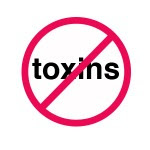Toxins are substances coming from the plants and animals that are poisonous to humans. They are also use for therapeutic medications but it causes diseases or death when used in excess amount.
..............................................
ANIMAL TOXIN is a toxin resembling bacterial toxins in its antigenic properties that is found in the fluids of certain animals.
EXAMPLES:
- Frog toxin
- Snake toxin
- Scorpion toxin
Baxtrachotoxin is a toxin commonly secreted by frogs. It has a strong cardiotoxic and neurotoxic alkaloids. Baxtrachotoxin directly affect the sodium channels in the peripheral nervous system of an organism activating the channels and forcing them to remain open. This toxin can lead to death By irreversibly blocking the transmission of regular signals throughout the body over an extended period of time.
Natures TWIST
 |
| photo credit: google image |
Due to the effect of batrochotoxins which is about specific effect on the sodium channels, the toxin becomes an important tool for the study of the role of Na+ channels in the nervous system, and neuromuscular system. In Ecuador, a small frog, Epipedobates tricolor, produces epibatidine, an alkaloid that can be used as a painkiller. This compound works with nicotinic acetylcholine receptors and has been investigated for the possibility of the toxin being a treatment for Alzheimer’s or nerve pain injury.
Snake Toxin
 |
| photo credit: google image |
The very popular snake that is very poisonous with a single bite is the KING COBRA. Snake toxins have some of the most diverse mechanisms of disrupting human physiology. Snake venom has the ability to behave as a procoagulant or anticoagulant. The toxin has the ability to activate coagulation factors in the blood system that will start the clotting reaction in the circulatory system. The release of or von Willebrand factor initiates am increase of plaquets in the organism facilitating coagulation. Likewise, toxins can force normal proteins to change from a non-functional stage to one that promotes coagulation . Examples of snakes producing coagulant toxins are Vipera russellii, Notechis scutatus,and Bothrops sp. Usually, these coagulant toxins are also accompanied by the addition of other toxic components such as neurotoxins, myotoxins, etc.
Natures TWIST
Snake toxins can be used to correct clotting problems in humans, especially the anticoagulant compounds. Fibrolase is a toxin compound isolated from a copperhead snake. It has anticoagulant properties that have direct action on the clotting proteins in a human hence helping to eliminate clots in thrombosis. Hannalgesin, a toxin king cobras produce, is a neurotoxin that can be used as an analgesic in small quantities 36 in 11 without disrupting neurological or muscular functions.
Scorpion toxin
Scorpion venom is made up of neurotoxins and other proteins that can cause paralysis or death. The consequence of a scorpion sting depends highly on the amount of venom injected, the site stung, the immunological reaction of the patient, among other factors. The toxins found in scorpion venom typically alter the pathways to the release of neurotransmitter by hindering the pre-synaptic mechanisms that release neurotransmitters, like acetylcholine in neuromuscular junctions. These junction sites are found throughout the whole nervous system. Like in many toxins that are found on this site, this leads to paralysis.
Natures TWIST
 |
| photo credit: google image |
Despite the high toxicity found in a scorpion sting, the therapeutic properties have long been known in human history. The extracts produced by some of these venoms have been proven to treat, paralysis, epilepsy as well as serve as an analgesic. The anti-nociceptive properties of the venom are a result of peptide toxins found inside the venom In the case of a peptide toxin found in Bothus Martense, the toxins block the sensation or neural transmission of pain.
.....................................................................................................
PLANT TOXIN are any substance produced by plants that is similar in its properties to extracellular bacterial toxin
EXAMPLES:
- Daphne (Daphne Mezereum)
- Poison Ivy (Toxicodendron Radicans)
- Bracken fern (Pteridium Aquilinium)
Daphne (Daphne Mezereum)
Daphne, also called spurge laurel, lady laurel, paradise plant, or dwarf bay. All parts of daphne contain toxins, but the greatest concentrations occur in the bark, sap, and berries. Mezerein, an acrid resin producing a severe skin irritation and daphnin, a bitter, poisonous glycoside. These are extremely active toxins. Though some researchers suggest that extracts of daphne may have potential for treating leukemia, the plant is also known to be co-carcinogenic in the presence of low doses of carcinogenic compounds. Even a single berry chewed but not swallowed typically causes intense burning in the throat and mouth. Consumption of a few berries can cause upset stomach, headaches, diarrhea, delirium, and convulsions. If the victim falls into a coma, death can ensue.
Poison Ivy (Toxicodendron Radicans)
 |
| photo credit: google image |
Leaves and stems containing the latex.
Consumption of leaves and stems, by children or those seeking a herbal cure.........................................................................
Reference:
http://www.bio.davidson.edu/people/midorcas/animalphysiology/websites/2010/Baldeon/index.htm
http://museum.gov.ns.ca/poison/default.asp?section=plants






Walang komento:
Mag-post ng isang Komento